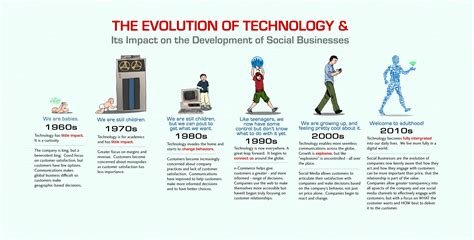The Evolution of Movie Technology: Past, Present, Future
In the ever-evolving world of cinema, technology has played a crucial role in shaping the way we experience movies. From the early days of silent films to the present era of digital filmmaking, movie technology has continuously pushed boundaries and transformed the way we consume visual media. In this blog post, we will be exploring the fascinating journey of movie technology, from its humble beginnings to the promising future ahead. We will delve into the early days of film, the revolutionary emergence of sound in movies, and the birth of color cinema. We will also discuss the significant advancements in special effects, the rise of digital filmmaking, and the exciting potential of immersive cinema. Join us as we take a captivating journey through the evolution of movie technology, examining its impact on the past, present, and future of the film industry.
The Early Days of Film
Before the emergence of sound and color in movies, the early days of film were a time of experimentation and innovation. Thomas Edison and the Lumière brothers were among the pioneers of this new form of entertainment, with their inventions shaping the future of cinema. The silent era saw the rise of iconic stars like Charlie Chaplin and Buster Keaton, whose physical comedy captivated audiences around the world.
During this time, films were often accompanied by live music or sound effects to enhance the viewing experience. Audiences were mesmerized by the moving images on the big screen, experiencing a whole new form of storytelling that transcended language barriers. Early filmmakers experimented with techniques such as close-ups, tracking shots, and editing to push the boundaries of visual storytelling.
Despite the limitations of early film technology, filmmakers found innovative ways to bring their stories to life. From hand-cranked cameras to elaborate set designs, the early days of film were marked by creativity and resourcefulness. The birth of the motion picture industry laid the foundation for the vibrant and diverse cinematic landscape we see today.
While the technology and techniques of filmmaking have evolved over the years, the spirit of creativity and passion that drove the early pioneers of cinema continues to inspire filmmakers around the world. The legacy of the early days of film lives on in the artistry and magic of the silver screen.
The Emergence of Sound in Movies
During the early days of film, movies were silent, relying solely on visual storytelling to captivate audiences. However, in the 1920s, a revolutionary change took place in the film industry with the emergence of sound in movies. This breakthrough innovation not only transformed the way films were made, but also revolutionized the entire cinematic experience for viewers.
The introduction of sound in movies marked a significant turning point in the history of cinema, as it allowed filmmakers to incorporate dialogue, music, and sound effects into their storytelling. Suddenly, characters could speak, and audiences could hear the ambient noises of the film’s setting, creating a more immersive and emotionally engaging experience.
One of the earliest and most iconic sound films is The Jazz Singer (1927), which featured synchronized musical performances and spoken dialogue. This film set a new precedent for the industry and paved the way for the widespread adoption of sound technology in movies.
The emergence of sound in movies not only transformed the way stories were told, but also led to the development of new sound recording and editing techniques that continue to be essential to filmmaking to this day. As a result, sound has become an integral and indispensable element of the cinematic art form.
The Birth of Color Cinema
Color cinema was a significant milestone in the history of film, marking a revolutionary change from the traditional black and white format. The introduction of color not only brought visual vibrancy to the screen, but also opened up new artistic and storytelling possibilities for filmmakers.
The earliest attempts at color cinema can be traced back to the late 19th century, with innovators experimenting with various techniques such as hand painting individual frames or applying color dyes to the film strips. These early methods were time-consuming and expensive, making color films a rarity in the early days of cinema.
It wasn’t until the 1930s with the development of Technicolor that color cinema truly took off. Technicolor employed a complex process of capturing and reproducing colors on film, leading to the release of iconic films such as The Wizard of Oz and Gone with the Wind, which showcased the breathtaking beauty of color cinematography.
The birth of color cinema not only transformed the visual language of filmmaking but also had a profound impact on the viewing experience, immersing audiences in stunning landscapes and vibrant costumes that added a new dimension to storytelling.
Advancements in Special Effects
Special effects in films have come a long way since the early days of cinema. From practical effects to the advanced CGI we see today, the advancements in special effects have completely revolutionized the way movies are made and viewed. In the early days of film, special effects were limited to simple camera tricks and practical effects, such as miniatures and matte paintings. However, with the emergence of computer-generated imagery (CGI), filmmakers were able to create more realistic and immersive special effects.
One of the most significant advancements in special effects was the use of CGI in blockbuster films. Movies like Jurassic Park and Terminator 2: Judgment Day showcased the potential of CGI in creating realistic creatures and futuristic environments. This marked a turning point in the history of special effects, as filmmakers no longer had to rely solely on practical effects to bring their visions to life.
As technology continued to advance, so did the quality of special effects in films. CGI became more sophisticated, allowing for seamless integration of computer-generated elements with live-action footage. The introduction of motion capture technology also played a major role in the development of special effects, as it allowed for more realistic and expressive CGI characters.
Today, special effects have become an essential part of filmmaking, with nearly every blockbuster film incorporating some form of CGI or visual effects. From superhero movies to science fiction epics, audiences now expect to see stunning and realistic special effects that push the boundaries of what is possible on screen. The future of special effects in cinema is undoubtedly bright, as technology continues to advance and filmmakers continue to push the boundaries of visual storytelling.
The Rise of Digital Filmmaking
With the rapid advancement of technology, the rise of digital filmmaking has brought about a monumental shift in the world of cinema. The traditional method of using celluloid film has been replaced by digital cameras, making the production process more efficient and cost-effective.
One of the biggest advantages of digital filmmaking is the ability to shoot for longer durations without having to constantly change reels of film. This allows filmmakers to capture more footage and have greater creative freedom during the shooting process.
Furthermore, the advent of digital editing software has revolutionized the post-production phase, making it easier to manipulate and enhance visual and audio elements. This has opened up a whole new world of possibilities for filmmakers to bring their creative visions to life.
Moreover, digital distribution has made it easier for independent filmmakers to reach a global audience without the need for expensive physical film prints. Platforms such as streaming services and online video sharing sites have democratized the film industry, providing a platform for diverse voices and stories to be heard.
The Future of Immersive Cinema
Immersive cinema has come a long way in recent years, and the future looks even more exciting. With advancements in virtual reality (VR) and augmented reality (AR) technologies, filmmakers are finding new ways to engage audiences like never before. The immersive experience allows viewers to step inside the story and become active participants, rather than just passive observers. This shift is transforming the way we consume and interact with cinematic content.
One of the most promising developments in the future of immersive cinema is the use of 360-degree video and spatial audio. This technology allows viewers to look around and explore the environment as if they were actually there. Combined with realistic sound effects, it creates a truly immersive and sensory experience that goes beyond traditional cinema. As this technology becomes more accessible and affordable, we can expect to see a rise in immersive storytelling across various genres and platforms.
Furthermore, the integration of haptic feedback and motion tracking into immersive cinema experiences is on the horizon. Imagine being able to feel the impact of an explosion or the gentle touch of a character’s hand. This level of sensory engagement has the potential to blur the lines between fiction and reality, transporting audiences into the heart of the narrative in ways never before imagined.
As immersive cinema continues to evolve, we can also anticipate the development of interactive storytelling. Viewers may have the ability to influence the plot and outcome of a film, making each viewing experience unique. This interactive element could lead to a resurgence of communal viewing experiences, as audiences come together to share and discuss the various paths and endings of immersive narratives. In essence, the future of immersive cinema holds endless possibilities for creative expression and audience engagement.
Frequently Asked Questions
What were the early days of film like?
The early days of film were characterized by silent, black and white movies that relied heavily on visual storytelling.
How did sound emerge in movies?
Sound emerged in movies with the introduction of synchronized sound technology, which allowed for the inclusion of dialogue, music, and sound effects in films.
When did color cinema begin to gain popularity?
Color cinema began to gain popularity in the 1930s with the development of Technicolor and other color film processes.
What advancements have been made in special effects in movies?
Advancements in special effects have included the use of computer-generated imagery (CGI), motion capture technology, and other innovative techniques to create more realistic and immersive visual experiences.
How has digital filmmaking changed the industry?
Digital filmmaking has allowed for greater flexibility, efficiency, and creativity in the production of movies, as well as making it more accessible to independent filmmakers.
What can we expect for the future of immersive cinema?
The future of immersive cinema is likely to involve advancements in virtual reality (VR), augmented reality (AR), and other technologies that will enhance the audience’s cinematic experience.
How has movie technology evolved over time?
Movie technology has evolved from silent, black and white films to the use of sound, color, digital effects, and immersive technologies, shaping the way stories are told and experienced on the big screen.






